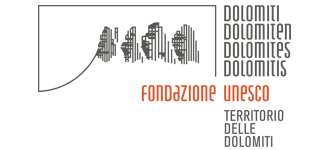BIRDS OF PREY RECOVERY CENTER
Home | Nature | Studies and research | Centro di recupero rapaci
A recovery center may be defined as a structure assigned to the care and reintroduction in the wild of wounded fauna. Its purposes are multiple.
The Andreis’ birds of prey recovery center is a facility of the Natural Park of the Friulian Dolomites devoted to the study, recovery and reintroduction in the wild of injured or distressed birds of prey.
PER APPROFONDIRE
A recovery center from the structural point of view can be constituted by several modules that are usually grouped in two distinct areas:
AREAS CLOSED TO THE PUBLIC (attualmente non presente ad Andreis)
Most of the modules of a recovery center (veterinary clinic, laboratory, therapy area, hospital area, rehabilitation area, warehouse) are closed to the public and the access to these areas is limited only to insiders.
AREAS OPEN TO THE PUBLIC
The educational purpose is one of the key of point of a recovery center. For this reason a number of constituent modules of the center are addressed to the public (visitors center with projection room and possibly small museum, aviaries for irretrievable animals). There are guided tours and audiovisual projections, through which the visitor learns what are the activities of the center and they provide many interesting facts about the biology of wild animals. Here visitors can watch live some specimens of irretrievable birds of prey, housed in special aviaries; these animals for various reasons (wounds, traumas, human habits, etc.) can not be released into the wild.
Il Centro recupero rapaci di Andreis attualmente possiede unicamente voliere disponibili per gli animali irrecuperabili.
EDUCATIONAL PURPOSES
Rappresentano probabilmente uno tra gli obiettivi più importanti di un centro di recupero. Molte persone e soprattutto i bambini hanno pochissime occasioni di entrare in contatto con la natura e con gli animali selvatici. Il centro di recupero rappresenta un punto di incontro tra la fauna selvatica e l’uomo; la possibilità di osservare da vicino degli animali selvatici rappresenta per i bambini un’emozione ed un’opportunità di crescita conoscitiva unica.
HEALTH MONITORING – WILD ANIMALS AS BIOLOGICAL INDICATORS
L’esame dello stato di salute di animali feriti, ammalati o in difficoltà che vengono rinvenuti sul territorio, mediante una visita clinica e degli esami di laboratorio, oltre a fornire dei dati importanti sulla salute delle popolazioni selvatiche, permette di valutare lo stato di salute dell’ambiente in cui questi animali vivono e che noi condividiamo con loro. La raccolta di dati sulla salute della fauna selvatica ha quindi delle ripercussioni anche nel campo della salute pubblica.
RECOVERY AND REINTRODUCTION INTO THE WILD OF INDIVIDUALS BELONGING TO SPECIES OF HIGH BIOLOGICAL VALUE (RARE)
The care and rehabilitation of wild animals with a high biological value (rare) is one of the main purposes of a center. These activities are undertaken usually by specialized vets; a medical intervention on an eagle or a chamois requires specialized knowledge that can not be extrapolated from the medicine concerning pet animals.
The diurnal and nocturnal birds of prey hospitalized in the Recovery Center of Andreis normally belong to the fauna of the Western Palaearctic. They come mainly from the territory of the park or surrounding areas. The species most often hospitalized in this rehabilitation center are the following (not in order of prevalence):
BIRDS OF PREY
Falco pecchiaiolo (Pernis apivorus) – Honey-Buzzard
Nibbio Bruno (Milvus milvus) – Red Kite
Sparviere (Accipiter nisus) – Eurasian Sparrowhawk
Astore (Accipiter gentilis) – Northern Goshawk
Poiana (Buteo buteo) – Eurasian Buzzard
Aquila reale (Aquila chrysaetos) – Golden eagle
Gheppio (Falco tinnunculus) – Common Kestrel
Falco cuculo (Falco vespertinus) – Red-footed Falcon
Lodolaio (Falco subbuteo) – Eurasian Hobby
Falco pellegrino (Falco peregrinus) – Peregrine Falcon
Albanella sp. (Circus sp.) – Harrier
OWLS
Barbagianni (Tyto alba) Barn Owl
Assiolo (Otus scops) Scops Owl
Gufo Reale (Bubo bubo) Eagle Owl
Civetta (Athene noctua) Little Owl
Allocco (Strix aluco) – Tawny Owl
Gufo comune (Asio otus) Long-eared Owl
Gufo di Palude (Asio flammeus) Short-eared Owl
See boards of hospitalized birds of prey
CAUSES OF HOSPITALIZATION
The type of disease observed in birds of prey is different depending on the type of structure in which the vet works (private veterinary clinic or birds of prey rescue center).
Very often the animals taken to a private veterinary clinic are falconry birds of prey and one of the anatomic parts most affected by disorders in this group of animals are the legs.
In contrast, the main problem of wild birds of prey delivered at a recovery center are the wings.
In a sample of 413 birds of prey of the genus Falco and 767 diurnal birds of prey belonging to the other types in Italy, examined in several Italian recovery centers in the years ’92 -’94, the wing diseases represented respectively 70% and 66% of the hospitalization causes.
Teaching something is one of the main purposes of a wildlife rescue center.
The Andreis Recovery Center is loacated near the Visitor Center in Andreis Park. This property has a well-organized guest house,a forming natural history museum, a secretariat and a conference room for over 100 persons, properly equipped. It is placed a hundred meters from the (Municipality) of Andreis. conferenze per più di 50 persone, opportunamente attrezzata.
The educational activity is carried out both in the Visitors Center and in the area of the irretrievable birds of prey. The flow of visitors is constant throughout the year with peaks in the spring and summer months, during which you can, upon telephone appointment with the Park, have a nature guide for a guided tour.

